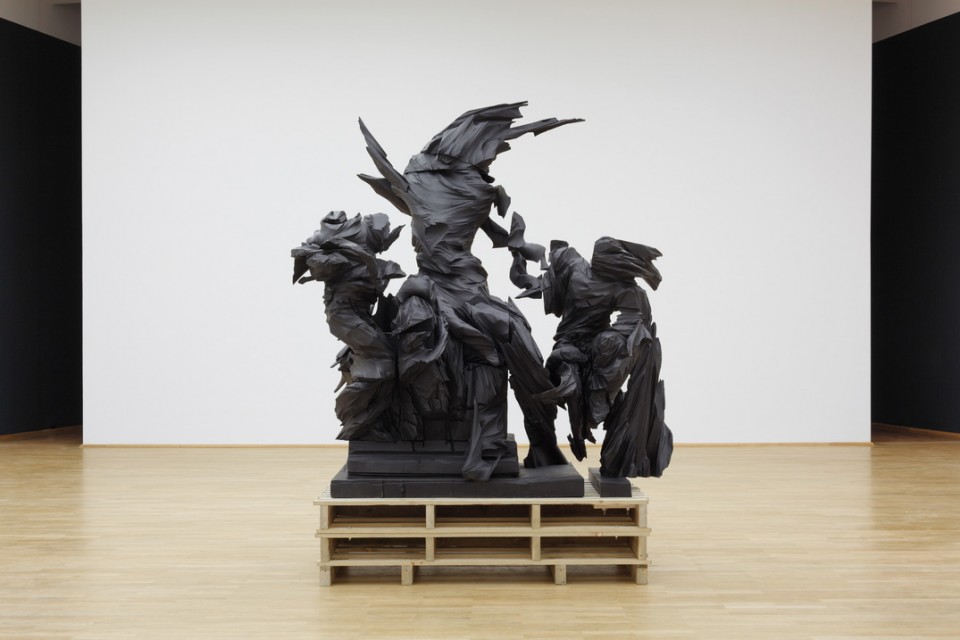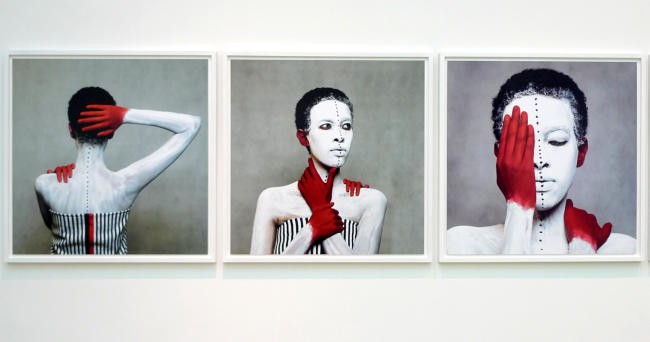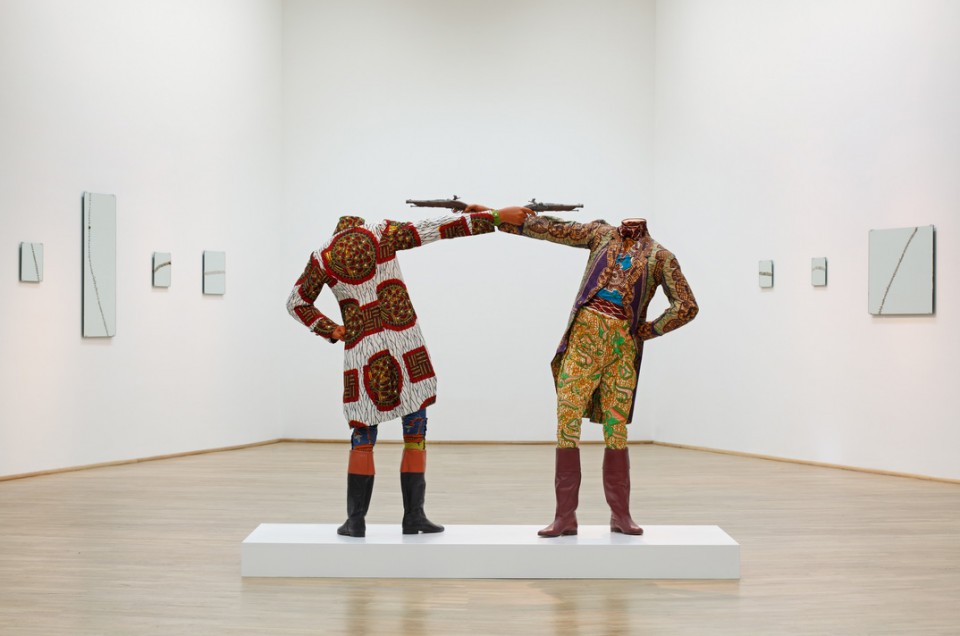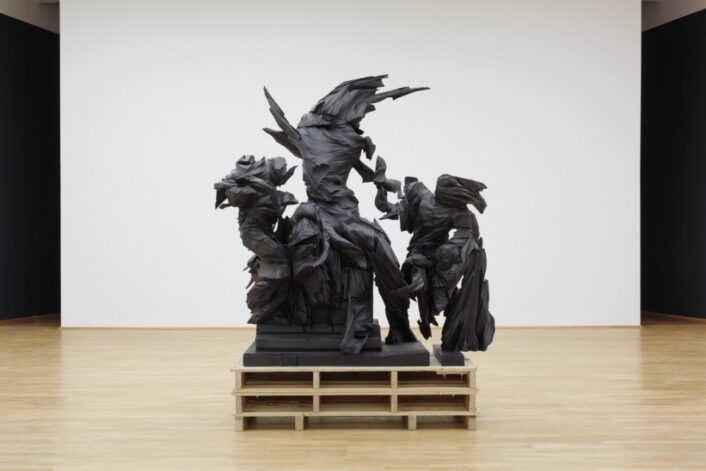
Wim Botha (b. 1974, South Africa) Prism 10 (Dead Laocoön), 2013.
Bronze 248.9 x 190.5 x 104.1 cm (98 x 75 x 41 in.) Collection of the artist, courtesy Stevenson Gallery, Cape Town/Johannesburg. Photograph by Axel Schneider.
This work is part of the ‘Hell’ section of the exhibition.
Image courtesy of The Smithsonian.
The Divine Comedy: Heaven, Purgatory and Hell Revisited featured the work of forty contemporary African artists from eighteen nations drawing upon themes of Dante’s 700-year-old epic poem Divine Comedy. Paris-based curator Simon Njami organized the exhibition, as the poem, into three categories. This multi-media show was the first to span the entire National Museum of African Art and demonstrated how concepts from Dante’s poem transcend and resonate with the artists’ diverse contemporary beliefs to provide a probing examination of life, death and the continued power of art to express the unspoken and the intangible.
The exhibition, previously shown at Museum fur Moderne Kunst Frankfurt am Main and the SCAD Museum of Art (in Savannah, Georgia), was most recently at The Smithsonian in Washington D.C. (through 8/2/15)

Aida Muluneh (b. 1974, Ethiopia) The 99 series, 2013.
C-prints Each: 86.4 x 86.4 cm (34 x 34 in.) Collection of the artist
Photograph courtesy the artist.
Above, three from seven photographs that comprise The 99 Series (each represents one of the seven deadly sins), which are also featured prominently in Dante’s “Purgatorio.” For Catholics, purgatory is a place where people are purged of their sins before going to heaven, but people also use the word to mean a state of expectantly waiting for something to happen. In the central photograph, an ominous third red hand adds a feeling of nervous anticipation.
Image courtesy of The Smithsonian.

Yinka Shonibare MBE (b. 1962, Great Britain) How to Blow Up Two Heads at Once (Gentlemen), 2006.
Mannequins, guns, Dutch wax printed cotton textile, leather riding boots, plinth, 175 x 245 x 122 cm (68 7/8 x 96 1/2 x 48 in.), Sindika Dokolo Collection, Luanda, Photograph by Axel Schneider.
Image courtesy of The Smithsonian.

Ghada Amer (b. 1963, Egypt)The Blue Bra Girls, 2012.
Cast and polished stainless steel 182.9 x 157.5 x 137.1 cm (72 x 62 x 54 in.)
Collection of the artist, courtesy Kukje Gallery, Seoul. Photograph by Axel Schneider.
An oval-shaped piece called The Blue Bra Girls is a sculpture that feels like a painting. Swirling lines of stainless steel portray eight women in a physical struggle, but with glaring eyes aimed at their oppressor. Amer said the inspiration for this piece came when she saw a photo of a young female protestor being dragged and beaten by police during the Egyptian unrest of 2011. Her torso was bare, expect for her blue bra. “This is my way of making a eulogy to the brave women who endure physical violence for democracy,” Amer told reporters in English. “The woman in the photo was tackled to the ground, but the women in my sculpture stand proudly with their eyes wide open.”
—Kwon Mee-yoo, The Korea Times
Image courtesy of The Smithsonian.
